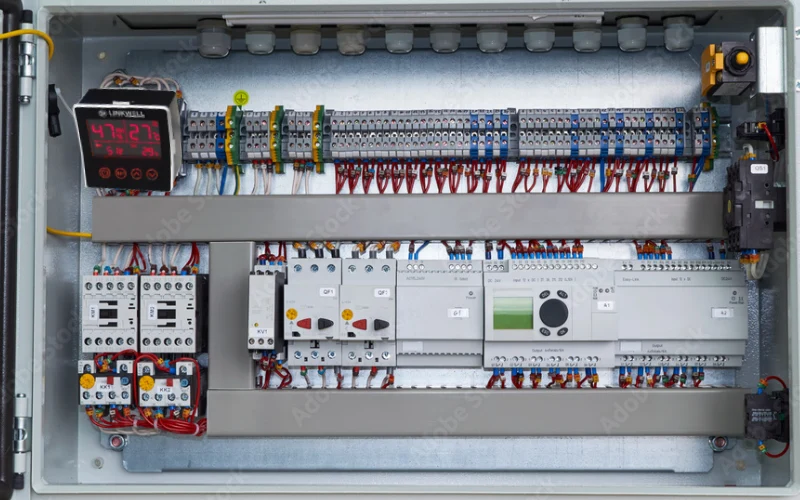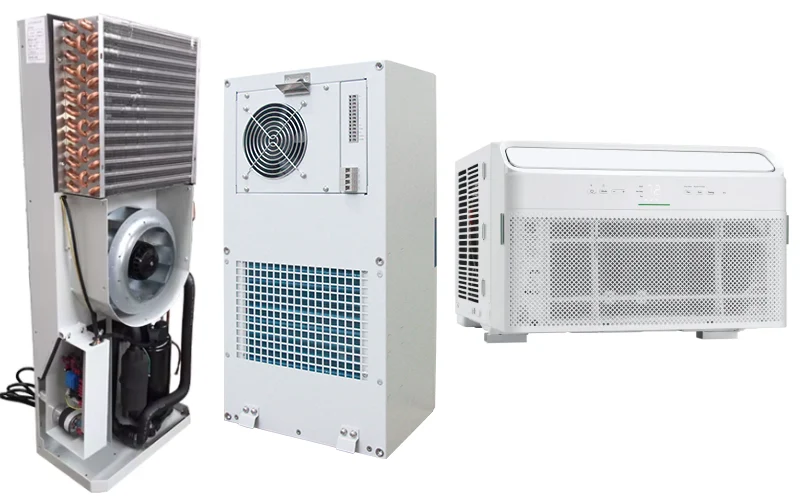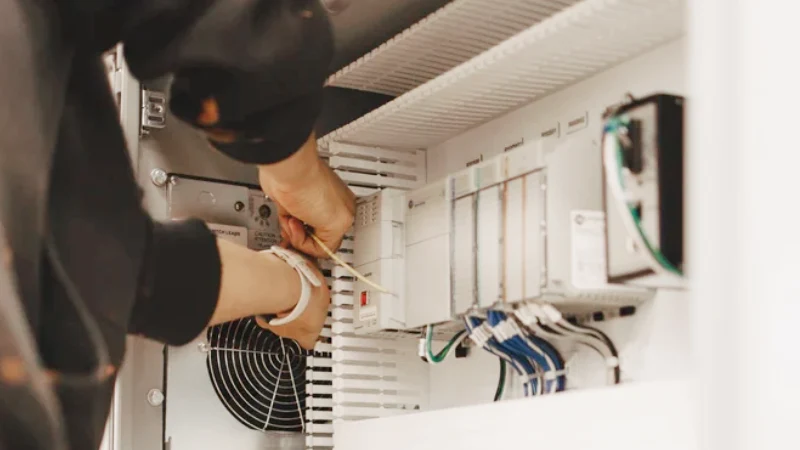What Are Electrical Control Panels? These essential systems manage and automate electrical power across industries, ensuring safe, efficient, and intelligent operations. Let’s explore how they work and why they matter.

Why Electrical Control Panels Are the Unsung Heroes of Modern Industry
Let’s be real for a second—most folks walk right past an electrical control panel without giving it a second glance. But those silent boxes packed with wires and relays? They’re doing some serious heavy lifting behind the scenes. Whether you’re running a bottling line in a factory, powering a hospital’s HVAC, or managing an entire smart building system, you’ve got one thing in common: an electrical control panel is making it all work smoothly.
As a seasoned manufacturer with over 15 years in the field, we’ve built and installed thousands of these systems. And let us tell you—when done right, control panels become the nerve center of your operation. This guide isn’t just a glossary of technical terms. It’s crafted from hands-on experience, real client feedback, and globally recognized standards like UL 508A and IEC 61439.
Get ready. Whether you’re a facility manager, OEM partner, or a curious engineer, this guide is built for you—with heart, insight, and a whole lot of know-how.
What Is an Electrical Control Panel?
At its core, an electrical control panel is a centralized unit that manages, monitors, and directs electrical power within an industrial or commercial facility. But that’s just the tip of the iceberg.
These panels are made up of complex arrays of circuit breakers, contactors, relays, programmable logic controllers (PLCs), and various interface devices. Think of them as the brain that tells each machine or device when and how to function.
As manufacturers, we get asked all the time: “Isn’t it just a fancy electrical box?” Not quite. A good panel doesn’t just house equipment—it orchestrates workflows, enables automation, and safeguards operations from catastrophic failure. The reliability of your entire process can hinge on how well your panel is designed and built.
Key Functions and Responsibilities of Control Panels
- Power Distribution: They route electricity from your source (say, a transformer or generator) to specific machinery or zones.
- Control Logic Execution: Through timers, sensors, and PLCs, they make decisions—start this pump, open that valve, shut down in case of overload.
- Safety & Protection: Breakers, fuses, and overload relays ensure nothing goes haywire. It’s your first line of defense.
- System Feedback: Through indicators and monitoring devices, panels help operators diagnose faults or inefficiencies in real-time.
Major Components Found Inside
Here’s a quick peek inside a typical panel:
| Component | Function |
|---|---|
| Circuit Breakers | Protection against overload and short circuits |
| Relays & Contactors | Switching mechanisms for motors and devices |
| PLCs | Logic execution and automation control |
| HMI (Human Machine Interface) | User interaction with system parameters |
| Terminal Blocks | Electrical connections between components |
| Power Supplies | Converts and delivers low-voltage control power |
We never build a panel without considering layout, accessibility, and future upgrades. That’s part of the professional edge we bring to every order.
How Electrical Control Panels Work: A Behind-the-Scenes Look

Let’s demystify how these beasts operate. It’s all about power routing and decision-making, working hand-in-hand.
Power Distribution Process
The incoming power enters the main breaker, gets split across different power buses, and routed to various machines or systems via contactors. Each path is protected and monitored.
It’s not just about sending volts and amps—it’s about controlling how and when that power is used. We design every circuit to minimize downtime and maximize efficiency.
Signal Control & Automation Explained
Let’s say your machine needs to start when a temperature sensor hits 80°C. The PLC receives that signal, checks the logic you’ve programmed, then sends a pulse to the contactor. Boom—your heater’s on. That’s automation magic, built into every one of our panels.
Types of Electrical Control Panels and Applications

Over the years, we’ve seen an enormous variety in the types of electrical control panels used across industries. But the key to understanding them is realizing that each panel is designed with a specific task in mind—and the wrong choice can cause chaos. So let’s break down the most common types, based on what our clients order and what our engineers swear by.
Power Control Centers (PCC)
PCC panels are the backbone of large-scale power systems. Designed to handle high-voltage and high-current applications, they’re used in places where power demands are substantial—think steel plants, oil refineries, and textile mills. These are built to strict safety protocols and usually include main incomers, busbars, and metering devices.
We always build PCC panels with internal separation, fire-retardant materials, and often install arc flash protection, based on IEC 61439-1 and NFPA 70E guidelines.
Motor Control Centers (MCC)
When your job involves running multiple motors—like in a bottling plant or water treatment facility—you need an MCC panel. These contain starter units, VFDs, and overload relays all neatly organized. Clients love these because they centralize control and reduce downtime during maintenance.
PLC Control Panels
These are the brains behind modern automation. PLC panels interpret field input signals and output precise control signals. Whether you’re running an assembly line or monitoring environmental controls, PLC panels offer the logic and adaptability you need.
Our engineering team stays up to date with Rockwell, Siemens, and Schneider programming standards. And yes, we write custom ladder logic when needed.
VFD Panels
Variable Frequency Drive (VFD) panels are used to control the speed of motors, making them critical for systems requiring energy efficiency. They’re popular in HVAC systems, conveyors, and fans.
We ensure all VFD panels meet harmonic distortion requirements and provide proper EMI shielding, so your system doesn’t suffer from unstable voltages or radio frequency interference.
Design Standards and Compliance: What You Must Know
When you’re dealing with electricity—especially in critical environments—compliance isn’t optional, it’s life-saving. We’ve built panels for export to over 25 countries, and we know first-hand how crucial it is to adhere to international and local electrical standards.
UL 508A, IEC, and NEC Compliance
- UL 508A: If you’re in North America, this is the standard your panel MUST meet. It ensures safety in construction, layout, wiring, and component selection.
- IEC 61439: This international standard governs how we design low-voltage switchgear. It’s widely accepted in Europe, Asia, and the Middle East.
- NEC (NFPA 70): The National Electrical Code in the U.S. defines how electrical installations must be done.
We submit all our panels to third-party testing labs and provide certificates of conformity upon request. We don’t just build to code—we build to exceed expectations.
Safety and Environmental Considerations
- IP Ratings: We match enclosure protection to the installation environment (e.g., IP65 for dusty areas).
- NEMA Ratings: In the U.S., we design according to NEMA 1, 4, 12, and 4X standards for indoor, outdoor, or corrosive environments.
- RoHS & CE Marking: All our components are RoHS compliant and CE-marked for EU shipments.
Manufacturing Electrical Control Panels: Insights From a Trusted Manufacturer
Let’s pull back the curtain a bit. You might be wondering, “How exactly does a control panel come to life?” Well, here’s how we do it.
Our Step-by-Step Production Process
- Client Consultation – We start with a thorough understanding of your operation, loads, voltage, and control philosophy.
- Design & CAD Drafting – Our in-house engineers create detailed 2D and 3D designs, factoring in spacing, heat dissipation, and safety.
- Component Sourcing – We work only with top-tier brands like ABB, Schneider, and Siemens to guarantee longevity.
- Panel Assembly – Wiring, component fitting, and labeling are done by skilled technicians trained under ISO 9001 standards.
- Testing – Each panel is put through megger testing, hi-pot testing, and simulation testing before shipping.
Materials, Quality Testing, and Durability Checks
We only use powder-coated CRCA steel or stainless steel for our enclosures. Inside, wires are neatly bundled, heat-resistant, and tagged according to IEC 60204.
Before shipment, every unit undergoes:
- Thermal imaging
- Overload testing
- 48-hour burn-in testing
That’s why our panels have a failure rate of less than 0.3%—one of the best in the business.
Top Use Cases Across Industries
We’re proud to say our panels are running 24/7 in places you wouldn’t believe. Here’s where they make the most impact.
Manufacturing & Assembly Lines
In fast-moving industrial zones, every second counts. Our control panels keep robotic arms, conveyors, and packaging machines perfectly in sync.
HVAC, Pumping Systems & Renewable Energy
In data centers and hospitals, reliable HVAC control is mission-critical. We design smart HVAC control panels that integrate with BMS systems, offering remote alerts and redundancy.
In the green energy space, our solar combiner boxes and wind turbine control panels are now being used across Europe and Southeast Asia.
Why Clients Choose Us: Testimonials From Wholesalers and End Users
We asked our clients to describe us in one word. Most said: “Reliable.”
Here’s what a few of them shared:
“After trying three vendors, we switched to your panels. In two years, zero breakdowns. Your build quality is unmatched.” — Rahul N., HVAC Installer, Singapore
“Every component was labeled, tested, and arrived ahead of schedule. Our techs installed it in one day with zero rework.” — Emily T., OEM Supplier, Canada
We’re grateful to serve a mix of distributors, contractors, and end users, and we treat each one like a long-term partner.
Installation & Maintenance: Tips From the Field
Installing a panel isn’t just about screwing it to the wall. A good install is about foresight and flexibility.
Common Mistakes to Avoid
- Undersized wireways or conduits
- Improper earthing
- Poor labeling that slows down troubleshooting
- Mounting panels too close to heat-generating equipment
Our team offers on-site supervision and installation kits to eliminate these issues.
Routine Maintenance Checklist
To extend the life of your panel, follow this semi-annual list:
- Tighten terminal connections
- Clean dust from cooling vents
- Test RCD/ELCBs
- Check for signs of heat damage
We also offer AMC (Annual Maintenance Contracts) for our panels, complete with real-time performance logs.
Smart Panels & the Future of Industrial Automation
We’re now entering an era where control panels are no longer just “boxes of breakers.” They’re smart, connected, and self-aware.
IoT Integration & Remote Monitoring
Our latest line of panels comes with modular IoT gateways that allow cloud-based diagnostics and data logging. Plant managers can now monitor:
- Load usage
- Motor run times
- Fault logs
…from their smartphones. That’s the future we’re building—smart energy ecosystems.
Energy Efficiency and Predictive Maintenance
Using AI-driven analytics, our panels can alert you before a failure occurs. We integrate CTs and sensors to monitor temperature, humidity, and energy spikes, optimizing operational efficiency.
Cost Breakdown: What Goes Into the Pricing of Control Panels?
Pricing varies wildly depending on size, specs, and application. But here’s what you’re really paying for:
| Cost Factor | Impact on Price |
|---|---|
| Panel Size | Bigger = more materials, labor, and shipping |
| Type of Control | Manual vs. PLC vs. IoT-based |
| Certifications | UL/CE increases costs due to third-party testing |
| Customization Level | Special enclosures, layout, branding |
A standard industrial panel might cost $2,000–$8,000. A high-end smart panel with IoT integration? Upwards of $25,000. But the ROI comes from reduced downtime, lower energy bills, and minimal maintenance.
FAQs About Electrical Control Panels
1. How long does an electrical control panel last?
Well-built panels can last 15–25 years with proper maintenance and periodic upgrades.
2. Can I retrofit IoT to my existing panel?
Absolutely. We offer retrofit kits with sensors and gateways compatible with most legacy systems.
3. What’s the difference between MCC and PCC panels?
PCCs handle incoming power distribution; MCCs manage multiple motor operations within that power flow.
4. Are your panels weatherproof?
Yes. We offer panels with IP65/IP67 and NEMA 4X ratings, designed for outdoor or washdown environments.
5. Do you offer remote technical support?
Yes. We provide 24/7 remote diagnostics and video-assisted troubleshooting for premium clients.
6. How soon can I get a custom-built panel?
Lead times range from 2–6 weeks, depending on design complexity and certifications needed.
Conclusion: Why the Right Panel Makes All the Difference
So, what are electrical control panels? They’re not just a box full of wires. They’re the beating heart of industrial infrastructure, the orchestrators of precision, safety, and productivity.
As a seasoned manufacturer, we don’t just supply panels—we supply peace of mind. Every wire, every relay, every LED we install is a reflection of our commitment to excellence, reliability, and client success.
So whether you’re upgrading an old system, launching a new plant, or building out your smart factory, we’re here to help—with experience, global standards, and unmatched craftsmanship.




